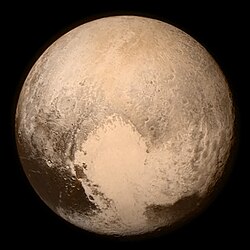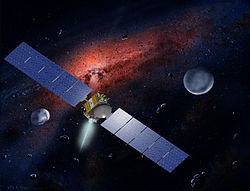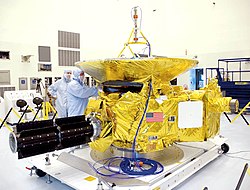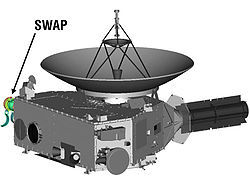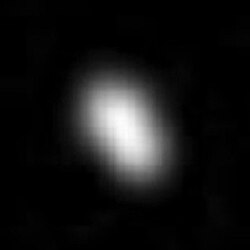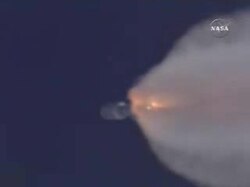PlutoCharon-1stColorImage-NewHorizons-Ralph-20150409
http://www.nasa.gov/mission_pages/newhorizons/main/index.html
http://pluto.jhuapl.edu/Multimedia/Science-Photos/
http://pluto.jhuapl.edu/Multimedia/Science-Photos/image.php?gallery_id=2&image_id=175
First color image from the New Horizons Mission - taken by the "Ralph" camera.
This image of Pluto and its largest moon, Charon, was taken by the Ralph color imager aboard NASA's New Horizons spacecraft on April 9 and downlinked to Earth the following day. It is the first color image ever made of the Pluto system by a spacecraft on approach. The image is a preliminary reconstruction, which will be refined later by the New Horizons science team. Clearly visible are both Pluto and the Texas-sized Charon. The image was made from a distance of about 71 million miles (115 million kilometers)-roughly the distance from the Sun to Venus. At this distance, neither Pluto nor Charon is well resolved by the color imager, but their distinctly different appearances can be seen. As New Horizons approaches its flyby of Pluto on July 14, it will deliver color images that eventually show surface features as small as a few miles across.Relevante Bilder
Relevante Artikel
New HorizonsNew Horizons ist eine Raumsonde der NASA, die im Rahmen des New-Frontiers-Programmes am 19. Januar 2006 startete, um das Pluto-System und den Kuipergürtel zu erforschen. Am 14. Juli 2015 erreichte New Horizons als erste Raumsonde Pluto. Außerdem passierte sie am 1. Januar 2019 das Kuipergürtelobjekt (486958) Arrokoth. Die Sonde erforscht zudem weitere Kuipergürtelobjekte aus größerer Entfernung sowie die Heliosphäre. Bei der Erforschung werden sieben verschiedene Instrumente eingesetzt: ein 6-cm-Teleskop, ein Ultraviolett-Spektrometer, eine hochauflösende CCD-Kamera, ein Radiowellenexperiment, ein Sonnenwind-Teilchen-Detektor, ein Ionen- und Elektronenspektrometer und ein Instrument zur Messung von Staubpartikeln. .. weiterlesen












